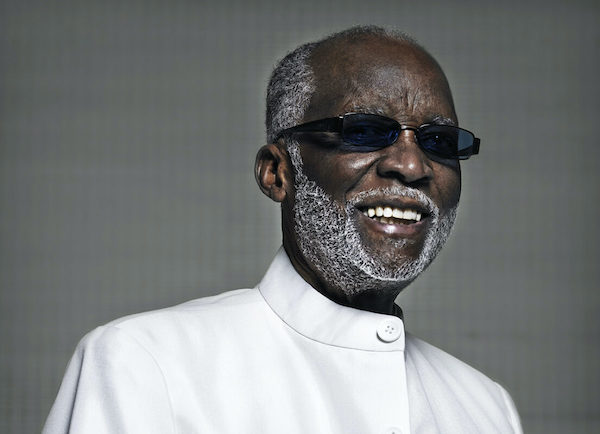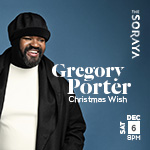Oct 28, 2025 10:47 AM
In Memoriam: Jack DeJohnette, 1942–2025
Jack DeJohnette, a bold and resourceful drummer and NEA Jazz Master who forged a unique vocabulary on the kit over his…

Ahmad Jamal will release a new album, Marseille, on July 7.
(Photo: J-M. Lubrano)For nearly seven decades, Ahmad Jamal has influenced generations of pianists, from Red Garland to Aaron Diehl. His profound piano style is an amalgam of Art Tatum’s improvisation prowess, Erroll Garner’s ebullient flourishes and Franz Liszt’s prodigious technique. His 1958 hit LP, But Not For Me: Live At The Pershing, spent 108 weeks on the Billboard charts.
For the last few years, Jamal, 86, was rumored to be retired. But now he is back with a new album, Marseille (Jazz Village/PIAS). Supported by drummer Herlin Riley’s Crescent City cadences, Manolo Badrena’s atmospheric percussion and James Cammack’s rock-steady bass lines, the album, due out July 7, features Jamal’s trademarked use of dynamics and spatial discipline, ranging from a rocking rendition of the traditional “Sometimes I Feel Like A Motherless Child” and the maze-like “Baalbeck” to the title track, performed as an instrumental with lyrics delivered by French rapper Abd Al-Malik and chanteuse Mina Agossi.
DownBeat spoke to Jamal by phone from his Massachusetts home about his time off, his return to the studio, his legacy and his love of France.
Let’s talk about your retirement.
Well, I never actually said that I retired (laughs). In 2014, at a concert in Prague, I disclosed to my men that I wasn’t going to accept any more engagements. That’s why I never came out with a blanket statement saying I retired.
By the way, I was semi-retired from 1969 to 1972. I founded a record company on 57th Street in New York City. I was producing records and managing. I’ve been touring since I was 17 years old (laughs). I left home as a kid. That’s much too young. Instead of going to Juilliard, I jumped on the road, and I’ve been on the road ever since.
The musicians you work with have been an integral part of your career, on the road and in the studio. Talk about the musicians in your current quartet, starting with James Cammack.
James has been with me for 35 years. He came to me from the Army Band at West Point, where he played bass and trumpet. James is one of my great line of bassists, including Johnny Pate, who did the score to Curtis Mayfield’s soundtrack to Superfly; Richard Davis; Wyatt Ruther, who ended his career with Erroll Garner; and Eddie Calhoun, who also played with Errol Garner. And there’s Reginald Veal, who alternates with James Cammack.
The prototype for all of the bassists you’ve worked with was Israel Crosby, who was part of the historic Live At The Pershing recording.
Israel Crosby wrote “Blues For Israel” when he was 16 years old, working for Gene Krupa! And he was one the first African American studio musicians in New York City. [And early in my career] I was his pianist in his group!
And then there’s Herlin Riley, who worked with Wynton Marsalis, and first appeared on your 1985 recording, Digital Works.
When I was in New Orleans, I needed a drummer. And a wonderful trumpet player said I’ll find someone for you, and found me Herlin. That was around 1982–’83.
Riley is the latest in a long line of New Orleans drummers you’ve employed, starting with the impeccable Vernel Fournier, whose second-line syncopations pulsed your biggest hit, “Poinciana.”
There’s James Johnson. He’s from Pittsburgh, but he was born in New Orleans. And of course, there’s Idris Muhammad. But the first one was Vernel Fournier. I found him in Chicago. He was one of the most sought after drummers there. It took some time for me to him to join my group because he was so busy. He was one of the most emulated drummers in the world. People are still trying to figure out how he played “Poinciana” on Live At The Pershing, because he sounded like two drummers.

Jack DeJohnette boasted a musical resume that was as long as it was fearsome.
Oct 28, 2025 10:47 AM
Jack DeJohnette, a bold and resourceful drummer and NEA Jazz Master who forged a unique vocabulary on the kit over his…

D’Angelo achieved commercial and critical success experimenting with a fusion of jazz, funk, soul, R&B and hip-hop.
Oct 14, 2025 1:47 PM
D’Angelo, a Grammy-winning R&B and neo-soul singer, guitarist and pianist who exerted a profound influence on 21st…

Jim McNeely’s singular body of work had a profound and lasting influence on many of today’s top jazz composers in the U.S. and in Europe.
Oct 7, 2025 3:40 PM
Pianist Jim McNeely, one of the most distinguished large ensemble jazz composers of his generation, died Sept. 26 at…

To see the complete list of nominations for the 2026 Grammy Awards, go to grammy.com.
Nov 11, 2025 12:35 PM
The nominations for the 2026 Grammy Awards are in, with plenty to smile about for the worlds of jazz, blues and beyond.…

Drummond was cherished by generations of mainstream jazz listeners and bandleaders for his authoritative tonal presence, a defining quality of his style most apparent when he played his instrument unamplified.
Nov 4, 2025 11:39 AM
Ray Drummond, a first-call bassist who appeared on hundreds of albums as a sideman for some of the top names in jazz…






